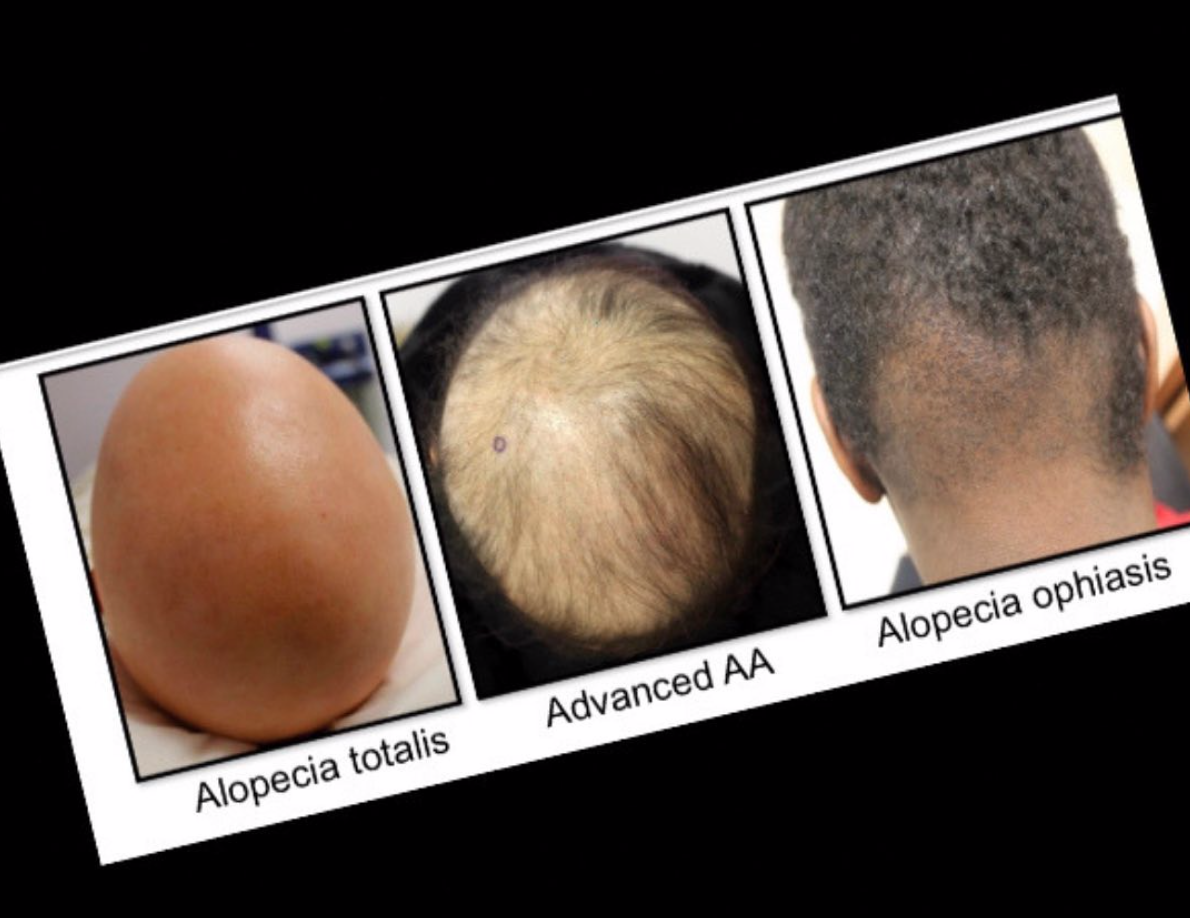Alopecia Areata: Many Different Forms
Alopecia Areata has Many Different Forms
Alopecia areata is an autoimmune condition which affects the hair and nails. Most individuals with alopecia areata develop circular or oval patches of hair loss. However, these are not the only clinical presentations or “forms” that are experienced. Some patients develop total loss of scalp hair but maintain some hair on the body or eyebrows or lashes. This form is called alopecia areata totalis (or simply alopecia totalis (AT). Some patients lose all hair on the scalp and body and this is called alopecia universalis (AU).
There are many variants of alopecia areata including patchy alopecia areata, alopecia totals, alopecia universalis and ophiasis.
Some patients lose hair just and the back and around the sides. This variant is known as “ophiasis.” When just one patch affects the scalp the term alopecia areata “monolocularis” is sometimes used and when many patches are present the term “multilocularis” is sometimes applied. Hair loss in the middle of the scalp with preservation of hair around the back of the scalp is called “sisaipho.” Localized hair loss of the beard is referred to as alopecia barbae and similar isolated loss can be seen on the eyebrows or eyelashes. Still other variants and forms of alopecia are recongized including a diffuse form that mimics telogen effluvium (alopecia areata diffusa), alopecia incognito, reticular (interconnecting), perinevoid (around nevi), annular (ring-like).
This article was written by Dr. Jeff Donovan, a Canadian and US board certified dermatologist specializing exclusively in hair loss.

